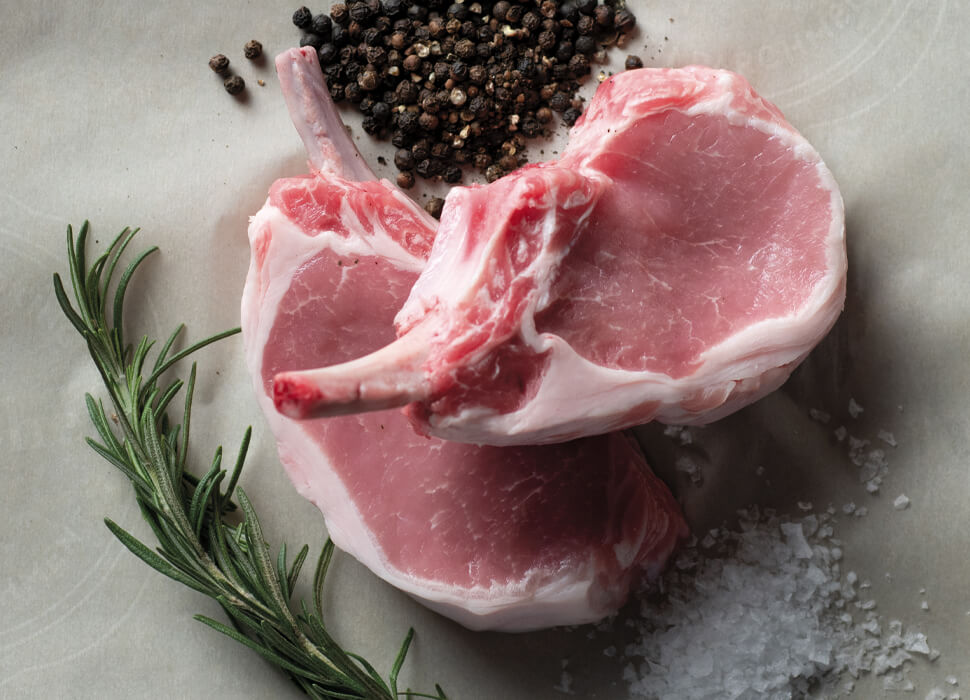When you think of a scrumptious weeknight meal for the entire family to enjoy, there’s a good chance it’ll involve pork! Whether you quickly air fry hickory smoked bacon for loaded egg sandwiches or sear a few boneless pork loin chops topped with your favorite seasonings, pork can keep everyone full for hours.
Plus, when you choose all-natural pork with no added hormones or artificial ingredients, you get the best tasting pork that is better for you and your family.
But with a variety of different pork cuts available, which option is best for you? What are the easiest and most convenient cooking methods for these pork cuts? Let’s dive into our essential guide covering these important details.
Different Pork Cuts Explained
It might be slightly confusing to wrap your head around various parts of pork. But to keep it simple, there are four main “primal” cuts of pork, which include shoulder, loin, leg, and side. To take it a step further, these main pork cuts can be chopped into “subprimal” cuts—many of which are accessible in stores. Keep on reading to gain a clearer understanding of each cut and the easiest ways to cook each one.
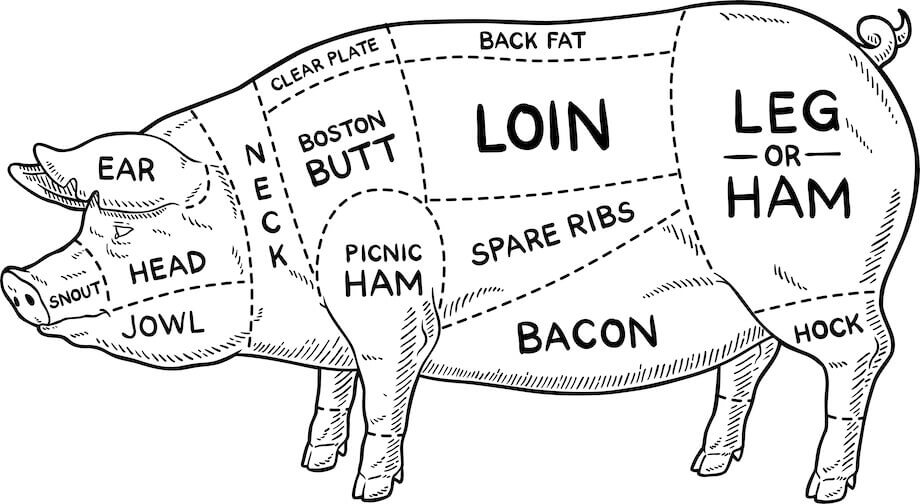
Pork Shoulder
One of the more fatty pork cuts available is “shoulder” or “blade shoulder” cuts. Usually pretty massive in size, these pieces are rich, tender, and emblazoned with lots of marbling—making pork shoulder an excellent (and economical) choice for family meals.
Many pitmasters will agree that the easiest way to cook any type of pork shoulder is “low and slow” on the BBQ to really activate the juiciest flavors, rendered from the fat. Along with picnic shoulder, neck bones, and coppa shoulder cuts, here’s a breakdown of the most common pork shoulder cuts:
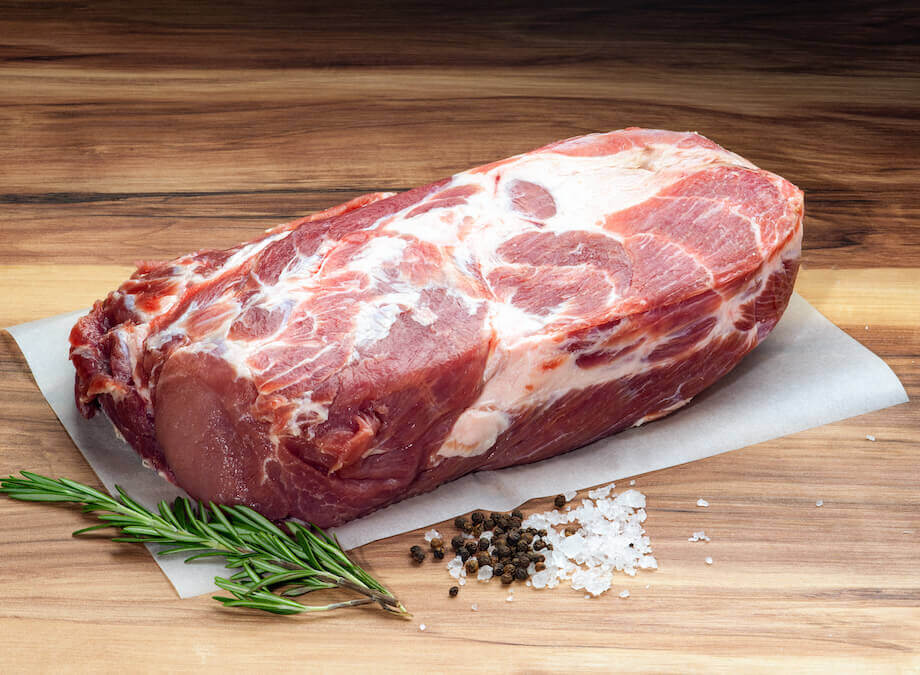
Pork Butt
When it comes to succulent, melt-in-your-mouth pork cuts, pork butt (also known as Boston Butt) makes a flavorful meal option, especially when prepared with simple ingredients and smoked—reaching an internal temperature of 225 degrees Fahrenheit for the most tender result.
Pork butt also derives from a denser part of the pork shoulder, upper arm, and neck. You can choose between all-natural boneless center, bone-in, or boneless pork butt cuts—all naturally full of flavor. However, boneless center and boneless usually cook more quickly than bone-in, since you can chop them into smaller pieces before grilling or smoking.
If you’re looking for a more convenient dinner option, you can quickly transform pork butt into tender pulled pork —perfect for 5-minute Pork Bite appetizers or crunchy Pulled Pork Egg Rolls.
Brisket
If you stroll into any BBQ joint, chances are brisket will be featured on the menu. This is one of the fattiest and most tender pork cuts, which is why the low and slow cooking method reworks best to amplify its delectable flavor.
Pork Loin
Pork loin is often thought of as the most tender, leanest, and easiest to cook pork cuts—coming from between the shoulders, all the way to the back legs.
Like the shoulder, the loin takes up a large portion, so a variety of cuts come from the loin, such as center-cut chops, sirloin chops, crown roasts, sirloin roasts, and more. Let’s take a look at the most popular pork loin cuts on the market!
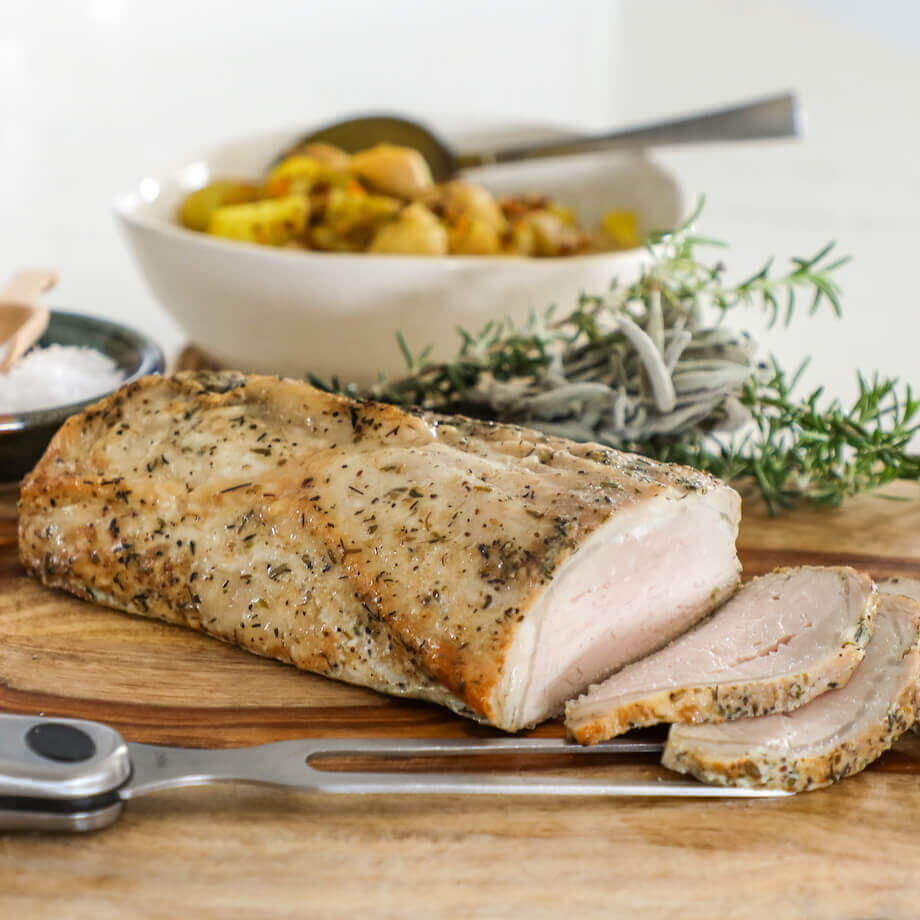
Pork Loin Chops
The most common and easy-to-find loin cuts are the classic pork loin chops—naturally thick and juicy. Plus, with these, you can use a variety of cooking methods, such as grilling, frying, or even broiling.
If you’re on the hunt for extremely tender chops, our All-Natural Boneless Center Cut Pork Loin Chops are a family favorite. With these tender cuts, try out our easy and healthy Italian-Style Air Fryer Pork Chop recipe. Simply, drench each chop in egg, a medley of parmesan cheese, and Italian herb seasonings, then pop in the air fryer for 15-20 minutes at 400 degrees Fahrenheit.
If the Italian flavors aren’t quite up your alley, check out these 6 Easy Pork Chop Recipes You Can’t Mess Up!
Rib Chops
Viewed as one of the fattiest pork cuts, rib chops are very common in restaurant kitchens because of their robust flavor and extreme tenderness—best prepared seared or grilled. You can also quickly identify a rib chop, because of the large bone that lines the side of this cut. However, most rib chops are sold “boneless” in stores.
Pork Tenderloin
If you’re hoping to find an extra lean loin cut that cooks exceptionally fast, choose pork tenderloin. For busy parents on the go, the Coleman Pork Tenderloin can be assembled in minutes by easily grilling, broiling, or roasting—pairing well with sweeter sides that balance the natural saltiness of the meat, like fresh island salsa.
For large family gatherings or festive summer soirees, try this Grilled Apricot and Arugula Salad with Pork Tenderloin that can be served in just 30 minutes!
Baby Back Pork Ribs
Cut from the same part as pork loin chops, All-Natural Baby Back Pork Ribs come from the backbone (hence the name) and are extremely tender. Usually, a full rack comes with at least eight ribs—plenty of meat to feed a medium-sized, hungry crowd!
For best results, it’s best to toss baby back pork ribs on the BBQ but pay close attention to them, since they can easily dry out. If you have around 30-35 minutes to spare, you can quickly assemble a spicy rub mix, cook them in the air fryer, and lather them in your go-to BBQ sauce.
Center Cut Loin Roast
In the mood for a fancy Sunday night dinner? One of the most popular pork roasts is the center cut loin roast, which usually comes with a large fat cap—making it exceptionally luscious.
If you don’t want to spend time grilling it, you can easily add some simple seasonings like salt and pepper, and allow it to slowly bask in the crockpot. For some added crunch, you can even throw in some red apples alongside the roast.
Pork Leg
If you’re sitting down at a holiday potluck or lavish meal, chances are pork leg could be a featured entree. Pork leg is where traditional hams (fresh, spiral-sliced, country, etc.) come from—yielding salty cured meats like prosciutto—a pork delicacy topper on light spring salads or creamy pasta dishes.
Since most hams are quite large in size, the best cooking method here is roasting low and slow. Needless to say, many pork leg cuts won’t generate an instant meal like the pork loin. Here are some of the most sought-after pork leg cuts:
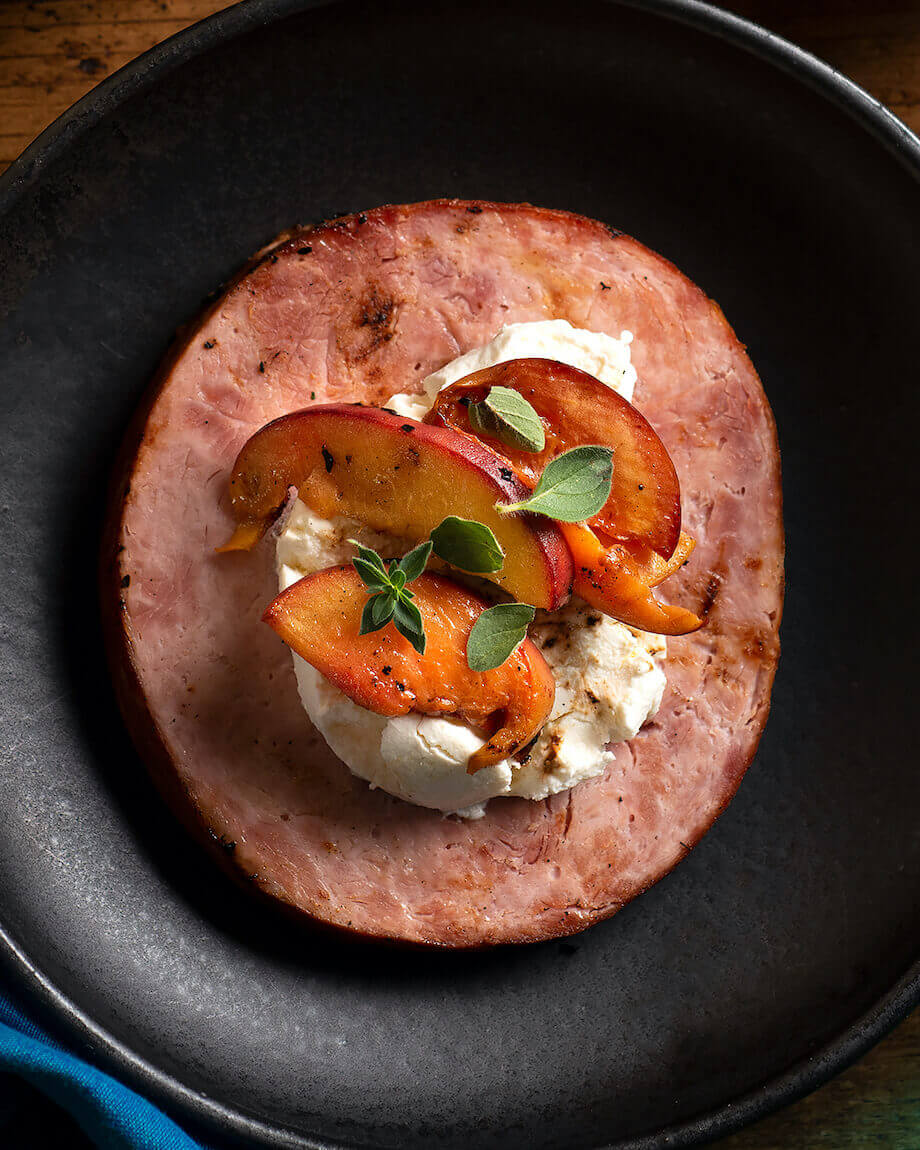
Ham Steak
One of the tastiest proteins to add to a sandwich, loaded soup, or stew is ham steak. If you want an easy, fully-cooked option ready to go in minutes, Coleman Natural’s Uncured Ham Steak can be consumed hot or cold—never containing antibiotics, hormones, or artificial ingredients. This specialty steak is slow-smoked over seasoned applewood, which gives it an unparalleled flavor!
Bone-In Spiral Ham
If you want to indulge in delicious ham but don’t want to endure the hassle of carving each piece, spiral ham is the best, no-fuss option. Coleman Natural’s Applewood Smoked Uncured Bone-In Spiral Ham is already pre-cut, matching the original shape of the ham, so each slice you serve is consistent.
Plus, it’s prepared with cultured celery powder and sea salt which are natural curing agents that allow the pungent flavors of the ham to shine. Since it’s fully cooked, all you need to do is preheat the oven to 375 degrees Fahrenheit and bake for 10-12 minutes per pound. If your dinner guests don’t finish the whole ham, you can have leftovers for the week too!
Country Ham
This Southern delicacy is a household favorite for many—as it’s dry-cured and salty—producing extremely complex flavors. To get the best results, country ham is usually roasted with the low and slow cooking method. Many country ham lovers choose to serve alongside mashed potatoes, crunchy vegetables, and fluffy buttered biscuits.
Fresh Ham Shank End
The shank end of a fresh ham is pretty lean, even with the layer of fat, which should be scored before roasting or grilling. There’s only one bone in the shank end, making it much easier to cut and consume!
Pork Side
Although there are several meaty pork cuts, any variation that comes from the pork side or belly usually contains higher fat content. Therefore, any side cut will likely be bursting with vibrant flavors—best cooked on the BBQ or slow-roasted. Some of the more popular pork side cuts include the following:
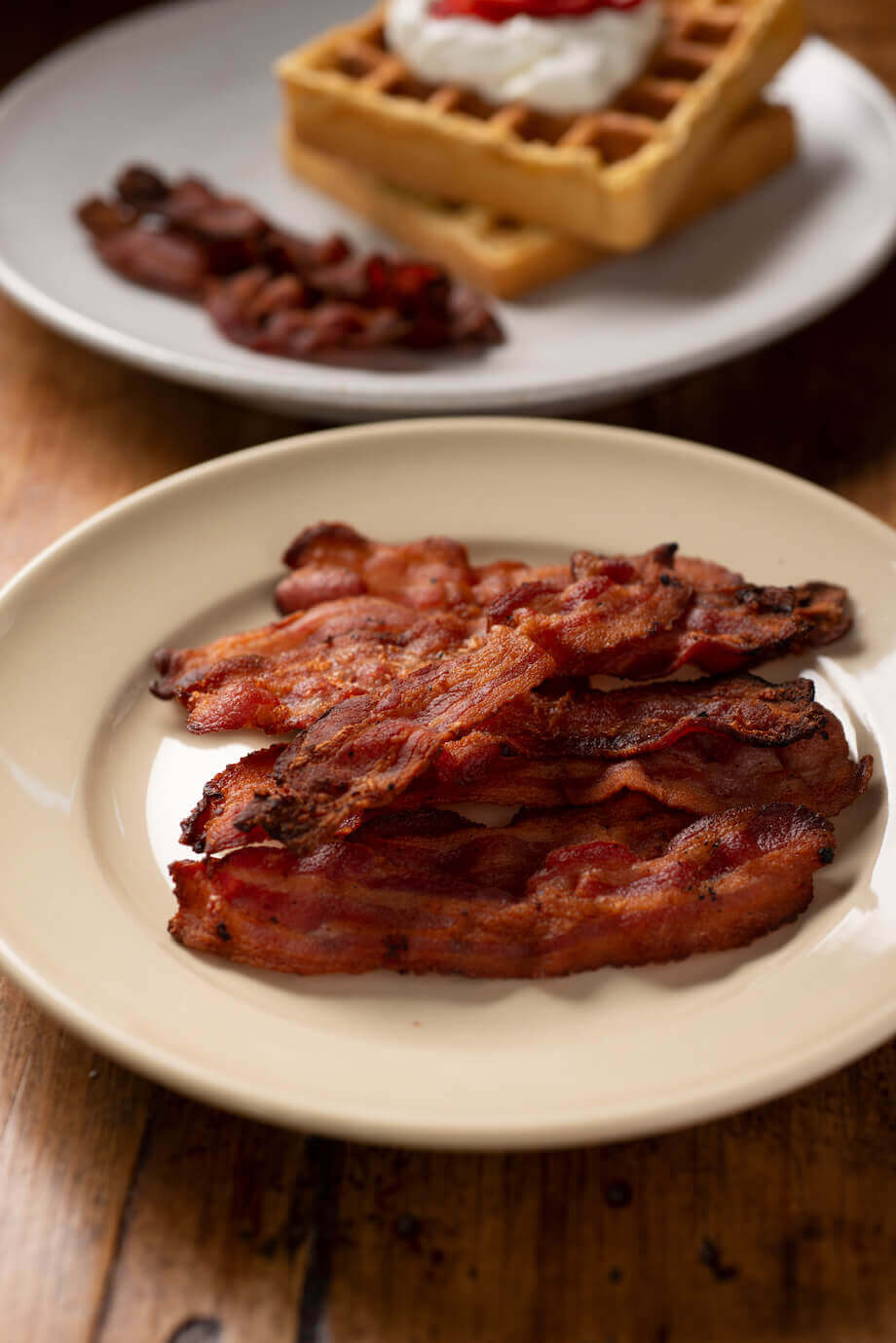
Bacon
One of America’s breakfast favorites is and always will be bacon, which comes in various forms such as sliced, slab, thin, or thickly sliced. Many prefer to pan-fry bacon or even pop slices in the air fryer—a healthier cooking method, cutting down fat…and time.
Coleman’s All-Natural Hickory Smoked Bacon is a weekend breakfast staple and a definite crowd-pleaser. If you’re looking to reduce sugar intake, you can even opt for delicious Sugar-Free Smoked Uncured Bacon.
Pork Belly
As the name suggests, pork belly stems from the flesh of the belly, near the loin. Not only is it exceptionally tasty, but it’s relatively inexpensive to buy! Usually, the skin is left on for that added crunch, but if you remove it, it can quickly transform into pancetta. Pork belly also adds loads of zesty flavor to several entrees—like spicy ramen or Bahn Mi sandwiches.
St. Louis Style Spare Ribs
If you’ve ever taken a bite of whole spareribs, you know they are almost too gigantic to grill or even eat! However, St. Louis Style Ribs are trimmed down significantly, so they’re leaner and easier to BBQ.
At Coleman Natural, we make the process even less complicated by hardwood smoking for eight hours. This 36-oz. full rack of ribs arrives on your kitchen counter cooked to absolute perfection and smothered in sweet BBQ sauce.
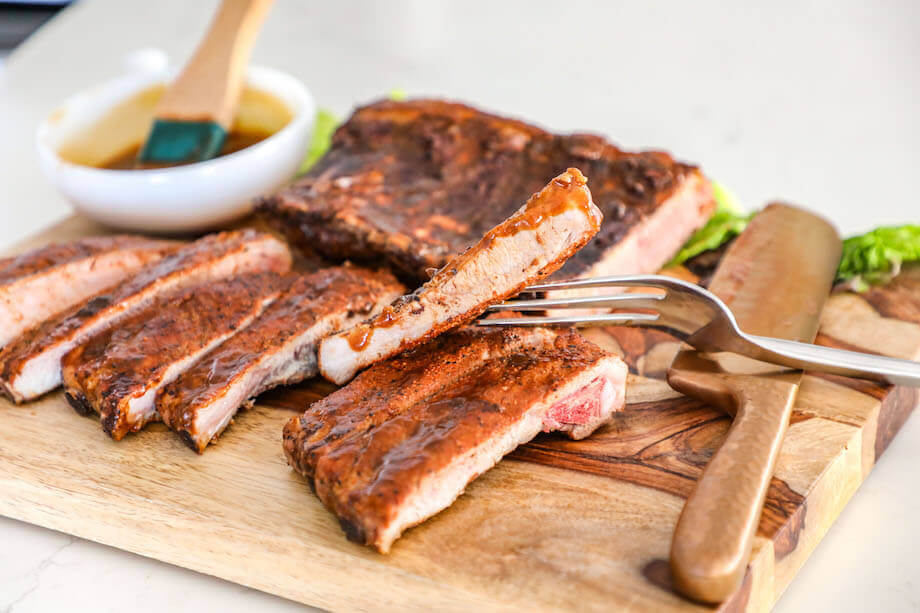
Get All-Natural, Healthy Pork Cuts
With so many pork cuts available at your fingertips, it’s critical to seek higher quality so you and your family can easily prioritize overall health and nutrition.
At Coleman Natural Foods, we always aim to exceed USDA “all-natural” standards, which makes us significantly different from other “all-natural” pork brands you might come across at typical grocery stores. This means we only partner with farmers who instill over 200 science-based humane animal care standards, including crate-free practices.
No matter which pork cut you choose, you can conveniently feed your family, knowing it’s from a trusted brand.
Check out more pork-related articles:
